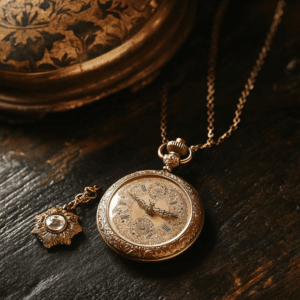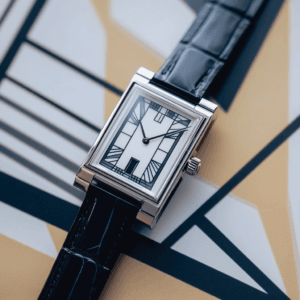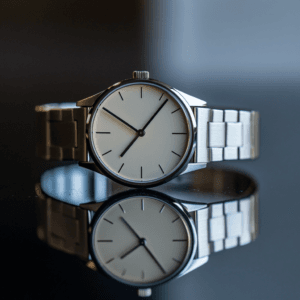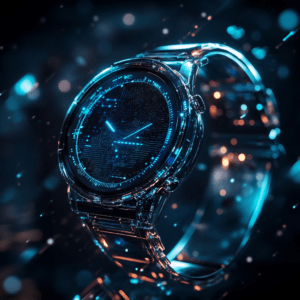
The history of women’s watches is a fascinating journey that mirrors shifts in fashion, technology, and societal roles. From ornamental pieces in the 19th century to smartwatches today, women’s watches have evolved dramatically. Each era introduced trends that transformed timepieces into versatile and essential accessories. This article explores the evolution of watches, highlighting key moments that shaped women’s fashion watches.
1. The Early Days: Watches as Jewelry (19th Century)
The Birth of the Wristwatch
In the 19th century, wristwatches were more about fashion than function:
- Ornate Designs: Early wristwatches were delicate, adorned with gold, enamel, and precious stones.
- Miniature Timepieces: Small and intricate, these watches were prized as fashionable accessories, not everyday tools.
- Status Symbols: Only the wealthy could afford these bespoke creations, making them a sign of status.

Pocket Watches for Women
Before wristwatches, pocket watches were common for women:
- Pendant Watches: Often worn as necklaces or brooches, combining style and function.
- Limited Use: These watches were more decorative than practical, often cumbersome to use.

2. The Rise of the Wristwatch (Early 20th Century)
The Transition from Pocket to Wrist
Wristwatches gained popularity in the early 20th century:
- World War I: Soldiers preferred wristwatches over pocket watches for practicality, influencing women’s fashion.
- Art Deco Influence: In the 1920s, watch trends leaned towards geometric, bold designs, reflecting modernism.

Functional and Stylish Timepieces
Watches became both functional and stylish during this period:
- Quartz Movements: By the mid-20th century, quartz technology made watches more accurate and affordable.
- Day-to-Night Versatility: Women’s watches were designed for both daytime and evening wear, blending practicality with fashion.

3. The Post-War Era: Fashion Takes Center Stage (1940s-1960s)
Hollywood Influence
Hollywood glamor influenced women’s fashion watches during this era:
- Glamorous Designs: Inspired by movie stars, watches featured diamonds and gold accents.
- Fashion Collaborations: High-fashion brands partnered with luxury watchmakers to create statement pieces.

Technological Advances
Innovation in watchmaking also shaped this era:
- Automatic Movements: Watches powered by wrist movement eliminated the need for winding.
- Water Resistance: Made watches more durable and practical for daily wear.

4. The Modern Era: From Fashion to Functionality (1970s-1990s)
The Quartz Revolution
The 1970s quartz revolution transformed the market:
- Affordable and Accurate: Quartz movements made watches accessible to a wider audience.
- Minimalist Designs: Sleek, unisex designs became popular, offering affordable fashion-forward options.

Designer Watches
The rise of fashion brands brought a new era of fashion staple watches:
- Luxury Brands: Gucci, Chanel, and Dior created watches blending high fashion with functionality.
- Collaborations: Partnerships between designers and watchmakers led to stylish innovations.

5. The Digital Age: Technology Meets Fashion (2000s-Present)
The Rise of Smartwatches
In the 21st century, technology and fashion merged:
- Smartwatches: Apple Watch and Samsung’s Galaxy Watch introduced fitness tracking, notifications, and customizable faces.
- Fashion Meets Tech: Brands like Michael Kors collaborated with tech companies, offering stylish yet functional smartwatches.
Sustainability and Ethical Fashion
Sustainability has become a key trend:
- Eco-Friendly Materials: Recycled metals, vegan leather, and eco-conscious packaging reflect broader trends in ethical fashion.
- Slow Fashion: Timeless, durable pieces focus on longevity, contrasting fast fashion.

6. The Future of Women's Watches
Advanced Technology and Wearables
As technology evolves, women’s watches will further integrate advanced features:
- Wearable Tech: Expect biometric sensors, augmented reality, and enhanced connectivity.
- Customization: Increased personalization will allow women to design their watches, from materials to digital faces.

Return to Craftsmanship
Despite tech advancements, traditional craftsmanship remains valued:
- Artisanal Watches: Handmade watches are seen as works of art, blending functionality with beauty.
- Limited Editions: Exclusive, limited-edition watches will appeal to collectors.

Frequently Asked Questions
What were women’s watches like in the 19th century?
Women’s watches were small, ornate pieces made from gold, enamel, and stones, often worn as jewelry rather than practical timepieces.
How did World War I influence women’s watches?
Wristwatches became more practical after WWI, shifting away from decorative designs toward functional timekeeping.
What impact did the quartz revolution have on women’s watches?
Quartz technology made watches more accurate, affordable, and accessible, leading to a boom in stylish, functional options.
How have smartwatches changed the women’s watch market?
Smartwatches combine tech and fashion, offering multifunctional devices with fitness tracking and customizable designs.
What are current trends in women’s watches?
Current trends include smartwatches, sustainability in materials, and minimalist designs emphasizing timeless style and quality.
What is the future of women’s watches?
The future will likely feature more advanced technology, customization, and a continued appreciation for craftsmanship and sustainability.
Conclusion
The history of women’s watches is a reflection of changing fashion, technology, and societal roles. From the ornamental designs of the 19th century to the high-tech smartwatches of today, women’s timepieces have evolved into essential fashion accessories. As trends continue to evolve, women’s fashion watches will remain both timeless and innovative, blending tradition with modernity to meet the diverse needs of women.
Post Comment